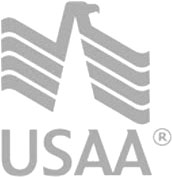When it comes to business financing, it seems as though things should be fairly straightforward: You figure out how much profit you can make, and then you use those profits to grow your business.
Things aren’t exactly that easy. In fact, what you really need to be aware of, when you are running your business, is what you have available in terms of working capital. This is an important distinction because, for many business owners, the operating cycle doesn’t always line up with when you collect on what is owed to you, or when money is coming in.
What is working capital?
Working capital is what you need to keep the business going, no matter what else is happening. Your working capital is what you have after you subtract your current liabilities from your current assets. It’s what’s left over after you pay salaries, buy or rent equipment, make payments on facilities, or purchase inventory. It is usually expressed in relation to how much cash you have available and the value of your inventory and other property.
The point of working capital is that it should be liquid and available for your use in building up the company. If you can’t create a cushion with working capital, you might be in trouble come next pay day, or if you need to make another purchase. In many cases, business owners obtain loans designed to help them smooth cash flow and provide them with adequate working capital. That way, business operations can continue, even if a client is late to pay, or if sales are down for a quarter.

Understanding short-term borrowing, its relationship to working capital and cash flow management, is an important part of owning a business. Nearly every business has to borrow at some point, and short-term loans in order to provide working capital are part of even the most successful and profitable companies’ balance sheets. Without working capital, business operations come to a halt.
How to figure out what you need for working capital
Deciding what you need in terms of working capital requires that you consider your company’s operating cycle. Start by being realistic about when you can expect to see profits from sales, or payments from clients. Often, you can’t expect to see funds for several weeks, and, in the meantime, you continue to pay salaries and overhead costs. Even if you have a business that doesn’t require a lot of inventory and property, you still need to consider your business cycle. Someone offering services might not receive payment from clients for 30 or 60 days, and that can hamper the ability to keep moving forward. Understand the realities of your situation, and the fact that you might not always have money coming in right when it should. Working capital can close that gap.
One of the things you can do is figure out how much growth you can expect annually, as well as factor in your current assets and liabilities. You should also pay attention to seasonal increases in business, as well as note seasonal decreases. You will need to carefully plan your working capital so that you can build up during times when your revenues grow, so that you have the cash you need to continue operations during times when revenues are lower.
If you are a new business, your working capital needs can be figured fairly easily. Add up what you will need, in terms of inventory costs, employment costs, and other costs, to run your business for six months to a year. This will give you a rough idea of what you will need for working capital to begin. For many startups, loans are needed to cover this amount, since owners will need to fund operations until the revenue starts coming in.
More established businesses can learn what to expect from the business cycle in order to better plan working capital needs. New business owners should prepare to observe the situation, so that they can make better decisions down the road. Once you have an idea of your own operating cycle as a business, you can get an idea of what you need in terms of working capital. Many business owners try to establish revolving business lines of credit that can be drawn on for working capital as needed, and then paid down when revenues come in.
Determining your working capital needs is an important part of running your business. Not only does it keep your operation smooth, but it is also a sign to others that you can competently manage your company. Investors and lenders look at your balance sheet, and consider working capital availability as one of the indications that you are a healthy company. If you have the working capital needed to cover your obligations and keep the business running, you are considered a competent business owners, and more likely to attract new investors, and receive better terms on future financing.























